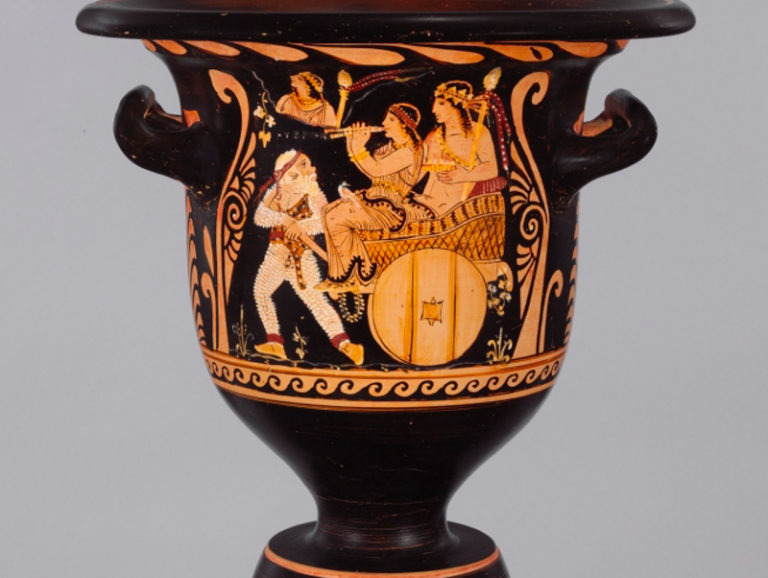
The 4th-century BC terracotta vase, by artist Python, had been on display in the New York Metropolitan Museum's Greco-Roman galleries for more than two decades.
Almost three years after being alerted that a piece of antiquity looted by tomb raiders in Italy in the 1970s was in its collection, the Metropolitan Museum of Art has turned it over to local authorities. The piece, a 2300 year old vase attributed to Greek artist Python, was finally surrendered to the Manhattan district attorney’s office last week, after investigators issued a warrant (published by the New York Times) to the Metropolitan Museum on July 24 after examining photographs and other evidence sent to them by Christos Tsirogiannis, a forensic archaeologist and lecturer with the Association for Research into Crimes Against Art, who has been researching looted artifacts for several years.
The vase, which was displayed for more than two decades in the Greco-Roman galleries of the museum, is a vividly painted bell krater depicting Dionysus, the god of wine, fertility, and creative ecstasy, riding in a cart pulled by a satyr.
The case began in 2014, when Tsirogiannis tracked down the Python vase by consulting the records of a convicted antiquities trafficker, Giacomo Medici.
Tsirogiannis published his suspicions that the vase may have been looted in a Journal and sent evidence to the Museum. Tsirogiannis told the Times that he didn’t hear back from the museum and because no action appeared to have been taken, last year he took his evidence to a Manhattan prosecutor, Matthew Bogdanos, who specialises in art crime.
Tsirogiannis had gathered copies of Polaroid photos shot between 1972 and 1995, reportedly seized from Medici’s storehouses in 1995, which showed the Python vase encrusted with dirt. He compared that image with an image of a similar item in a 1989 Sotheby’s sales catalogue, and those two to an image the Museum had posted online, finding all three to be identical. The investigator was aided by Medici being such a careful record keeper.
“The Museum has worked diligently to ensure a just resolution of this matter. Upon the publication in 2014 of an image of the piece, the Museum began reaching out to the Italian Ministry of Culture — which is in keeping with prior agreements we have with the Italian government. When the Manhattan DA contacted The Met in recent months, we immediately took the piece off display, and last week delivered it to the prosecutor’s office. The Museum is always committed to working with government partners to resolve an issue regarding an item in our collection,” said officials from the Museum.